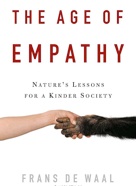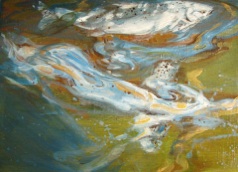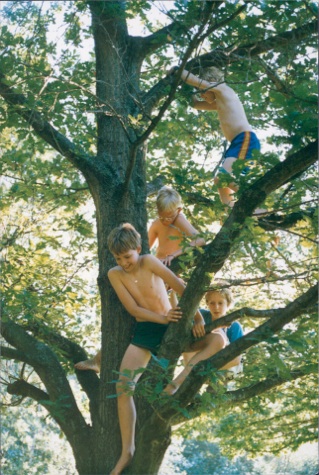understanding



what is “understanding” ?
We may claim that a child knows what 1/2 means, or what 1/3 or 1/4 is ... but when do we claim that she or he understands fractions? What is different from knowing things, or knowing how to do something and understanding that domain?
Back to my landscape metaphor. I think there are two indicators. First, one understands a domain when one can either interpolate between places one knows, and fill in what is to be found in between. In the landscape one might say ”Ahh, I bet there are cloudberries down there, and its a sunny place, they ought to be getting ripe!” For fractions one might ask the child to now explain, or show, what is 1/5 or 1/10th, some fraction that has never been encountered. If it comes fluidly, the child understands.
A colleague of mine, Rob McDuff who used to work with Brent Cameron, actually did a study of how many repetitions with various fractions were required before a child understood the notion. In his work he found that it was not 3, or 10 ... but more in the order of 250 individual repeats before it was understood in the terms I’ve expressed.
“The [episode described] below ensued when [the chimpanzee] Belle had been shown food, whereas the alpha male, Rock, had no clue:
If Rock was not present, Belle invariably led the group to food and nearly everybody got some. In tests conducted when Rock was present, however, Belle became increasingly slower in her approach to the food. The reason was not hard to detect. As soon as Belle uncovered the food, Rock raced over, kicked or bit her, and took it all.
Belle accordingly stopped uncovering food if Rock was close. She sat on it until Rock left. Rock, however, soon learned this, and when she sat on one place for more than a few seconds, he came over, shoved her aside, searched her sitting place and got the food.
Later on, Belle learned not to approach the food, not even look in its direction, if Rock could see her. She’d sit farther and farther away, or would lay a false track, such as leading Rock to a spot where only one little piece of food had been hidden. She let him have this, while she rushed to the larger pile.”
De Waal F. (2009) The Age of Empathy;
Nature’s Lessons for a Kinder Society. p. 97

passion and expertise
You may enjoy, if you have time, the TED talk by Ben Zander in which he describes the development of expertise, in this case piano playing, from a kind of unconnected approach to a wholeness, in what he calls “one buttocks playing”. This links with my notion of understanding as the ability to integrate the context (the landscape) with the particularity (a location).
Did Belle, the chimp, “know” or did she “understand”?



A second indicator of understanding is the ability to extrapolate, that is to see what lies beyond the particular landscape that one has learned, or to be able to see how that which one has learned in one domain clarifies or reveals some congruencies in some other domain. Sometimes this is spoken of as the ability to “apply” knowledge, but in my view that is a specific and limited instance, and is really more analogous to Maturana’s story of the macaques learning a law of the universe. A generality applies more broadly than the observer may assume.
When a configuration or relations, rather than specific elements or individual connections is grasped, then this configuration can be properly extrapolated or interpolated. The ability to see “between and beyond” known bits is how we distinguish that something is “understood”. Thus understanding is a generative capacity, it is creative. It is poetic and relies on systemic rationality.

Veronica Plewman art
“Play is the behaviour that
enables expansion of understanding”
Why does Maturana make that claim?
I think it is because play does not follow a prescribed route, it does not have a predetermined result, and thus it is open to newness. It has the opposite effect of being bound by certitude.
Furthermore, play is a pleasure, and when things are a pleasure we are not foreclosing our vision through emotions of anger, frustration, sadness, etc. We love our world.
There are many forms of play, and play is not “just anything goes” it is enacted within the contextual constrains of any domain. The children climbing the tree act with implicit constraints. They hang on and use branches big enough to support them. The people playing tag enjoy themselves as long as everyone accepts an explicit constraints.
I play cooking. I play taking photos. I play in my garden.
I am playing with ideas, making a website, now.
Playing can take many forms.

slow thinking
You have of course heard of “slow food” in contrast to “fast food”.
I like to use that analogy for thinking. There are many wonderful benefits to slow thinking. One can play with ideas if one is not pushed to produce some particular result with them.
Playing takes time.
Slow thinking enables the molecular changes that go with learning; the growth of dendrites, of new nerve cells. New synapses, new configurations of connections. In slow thinking we harmonize the intersections between many domains through multiple reverberations through the nervous system.
Thus dreaming and meditative, contemplative times are also a form of slow play, supporting slow thinking, and offering forth a quality and depth of “flavour” that fast thinking does not provide.

serious
business


